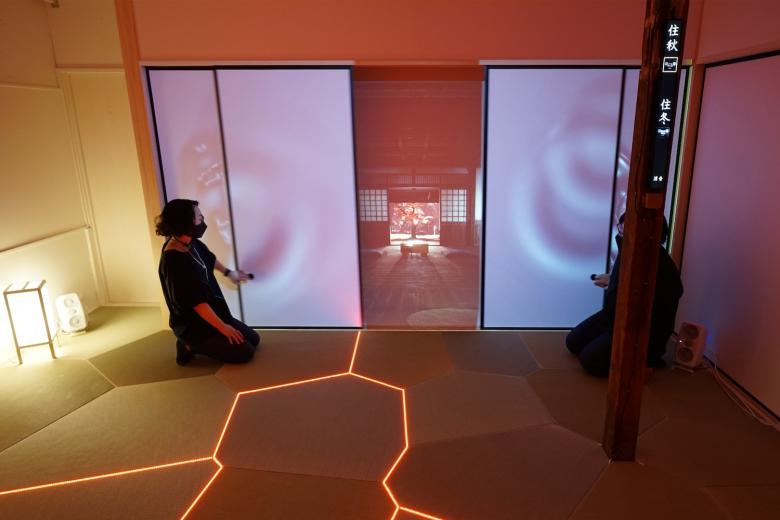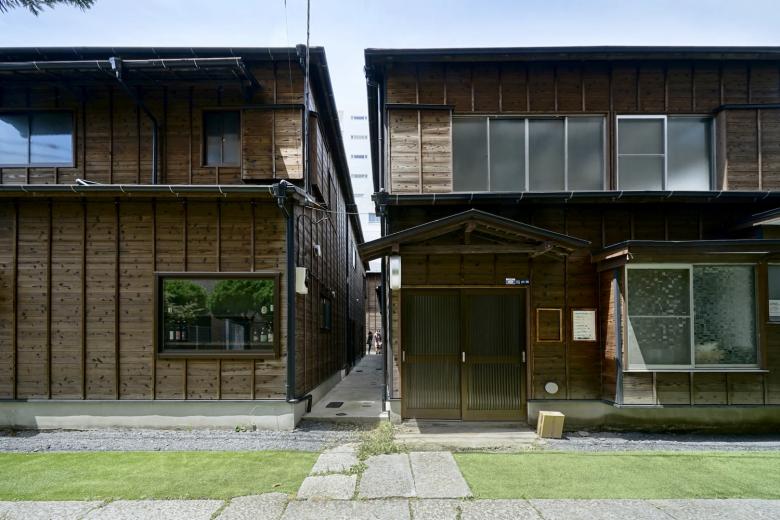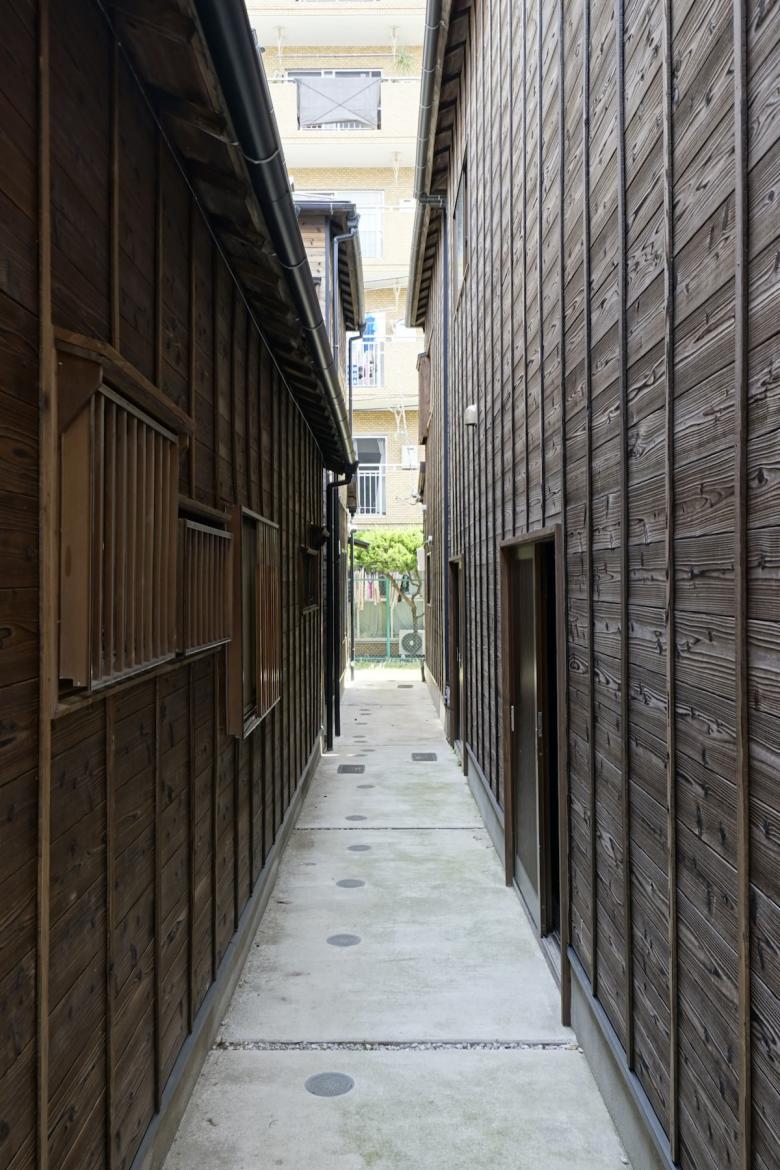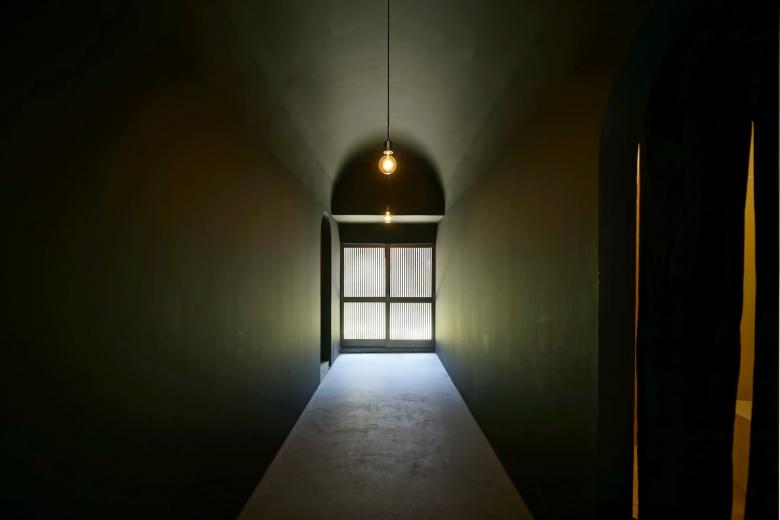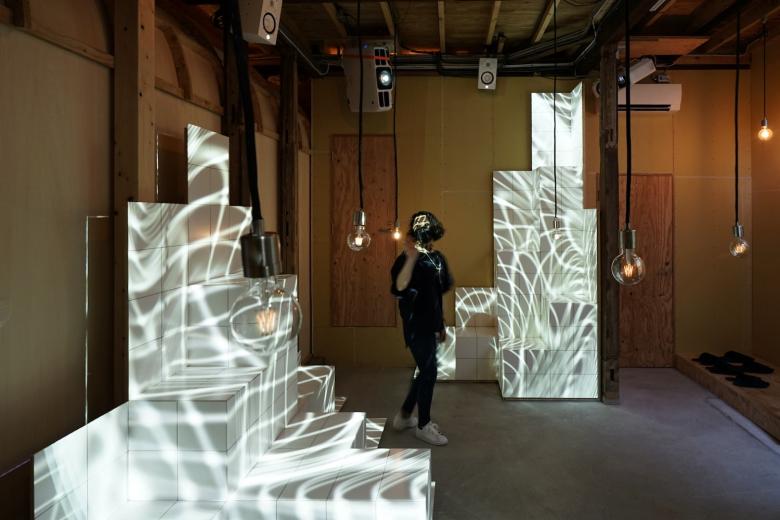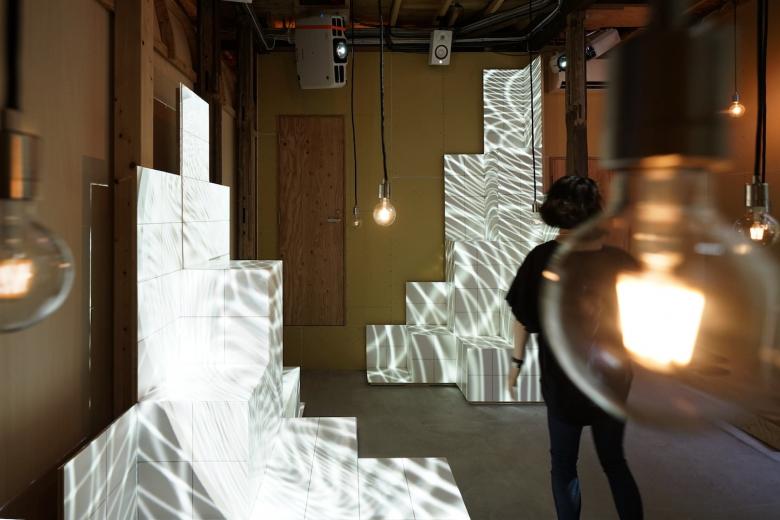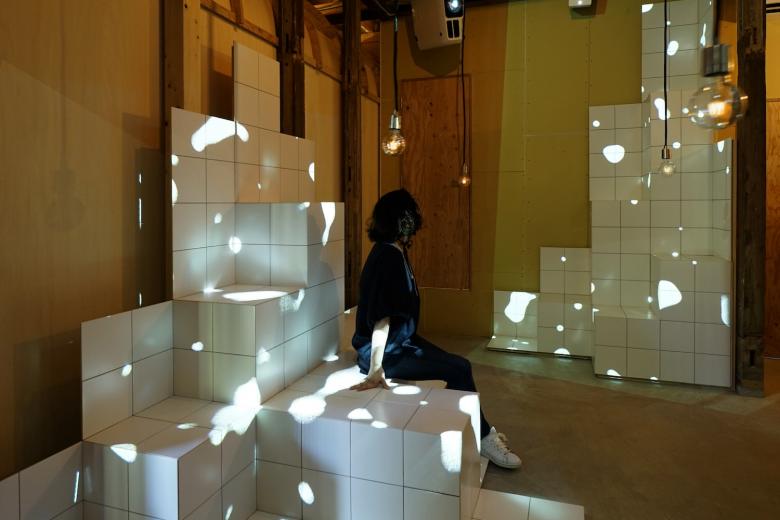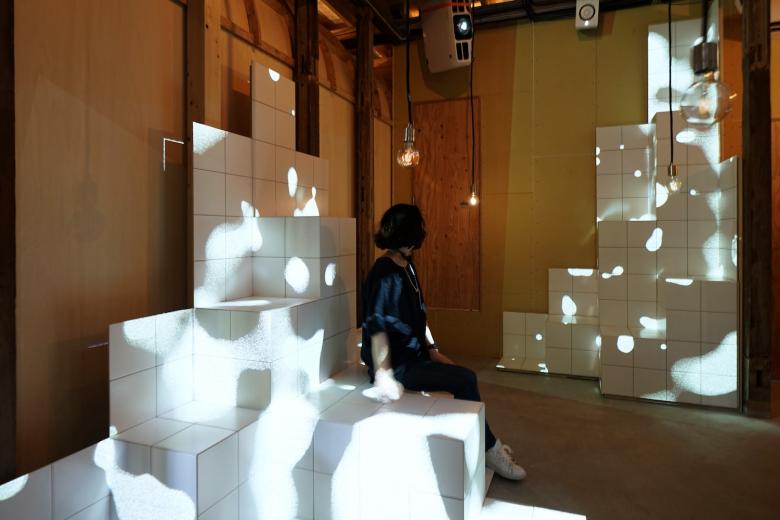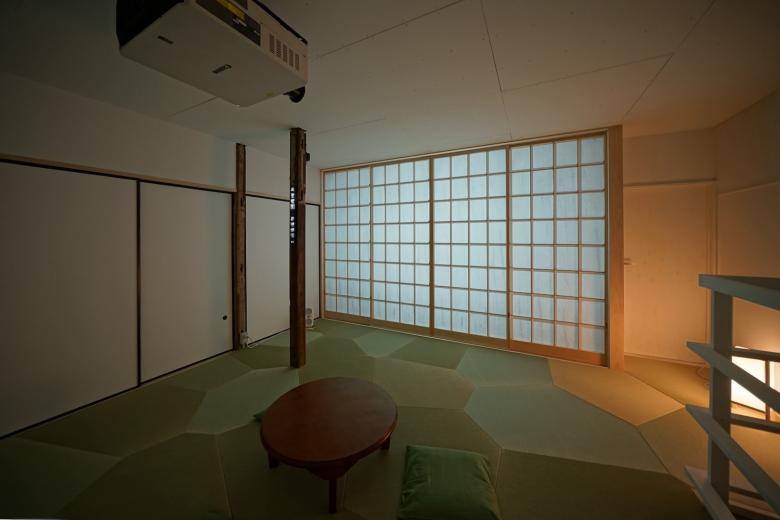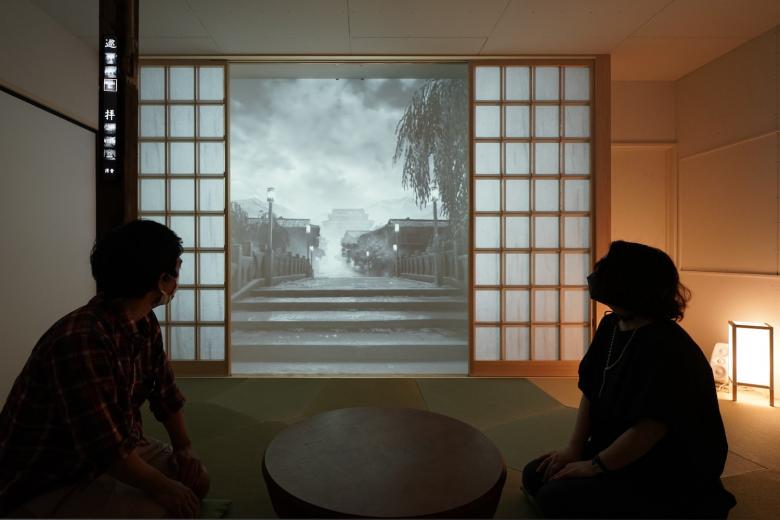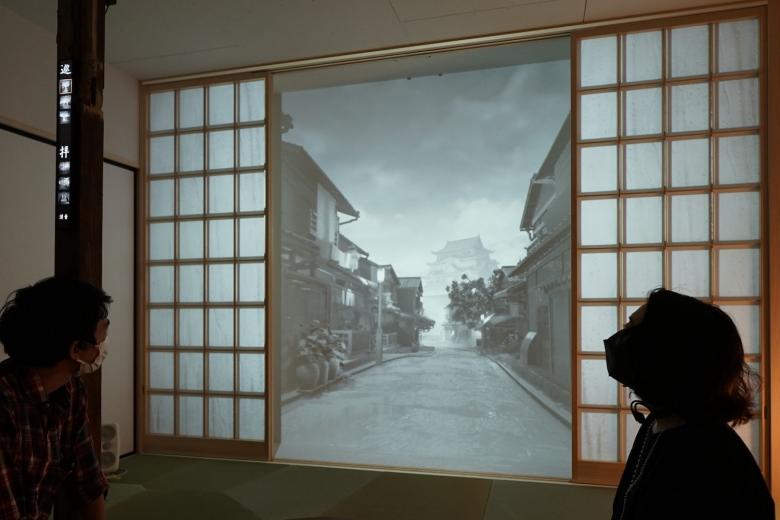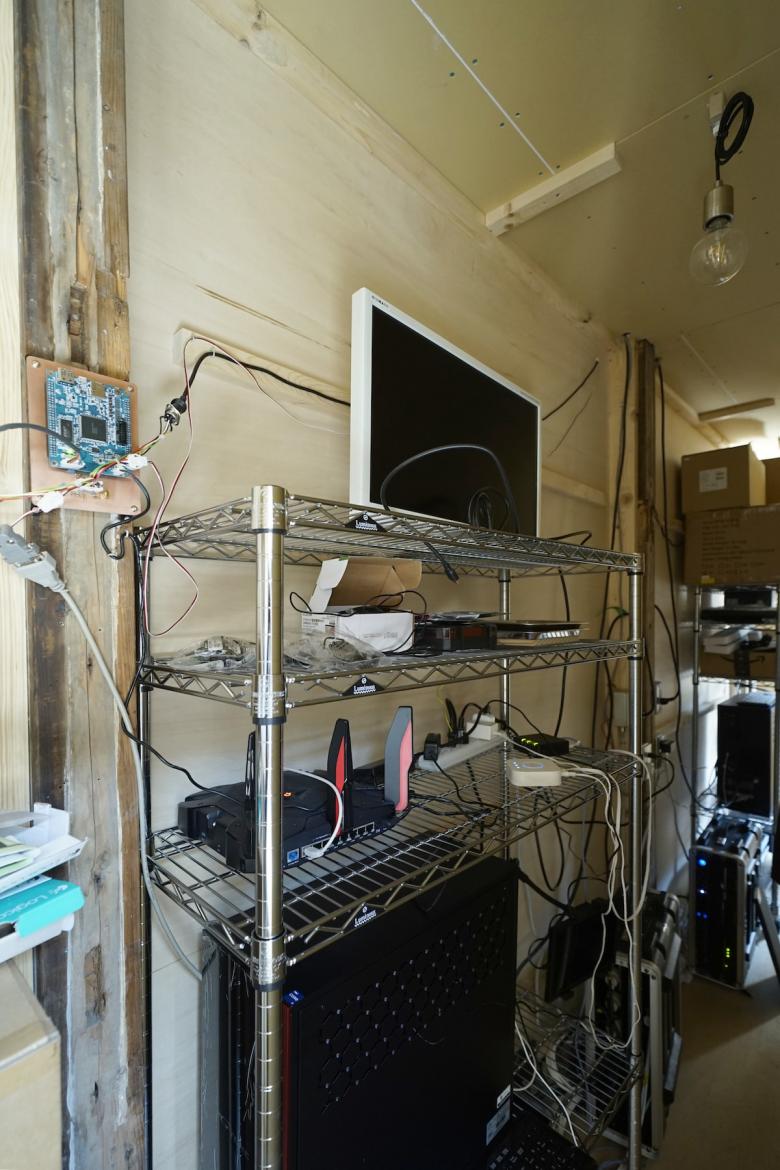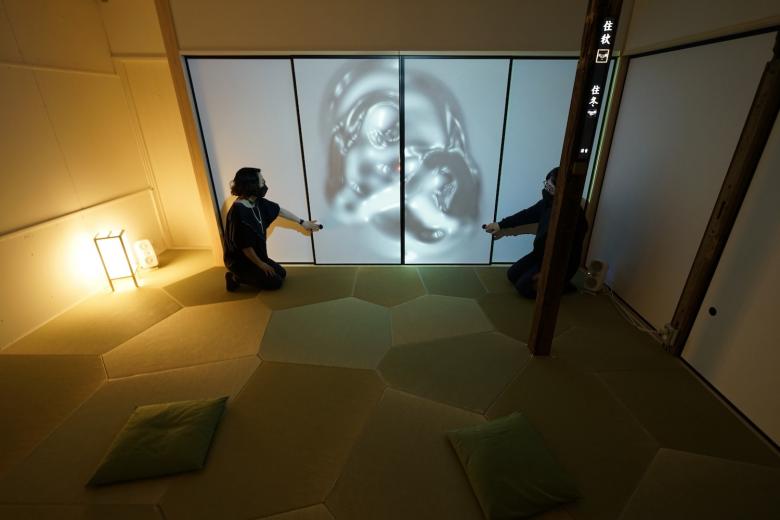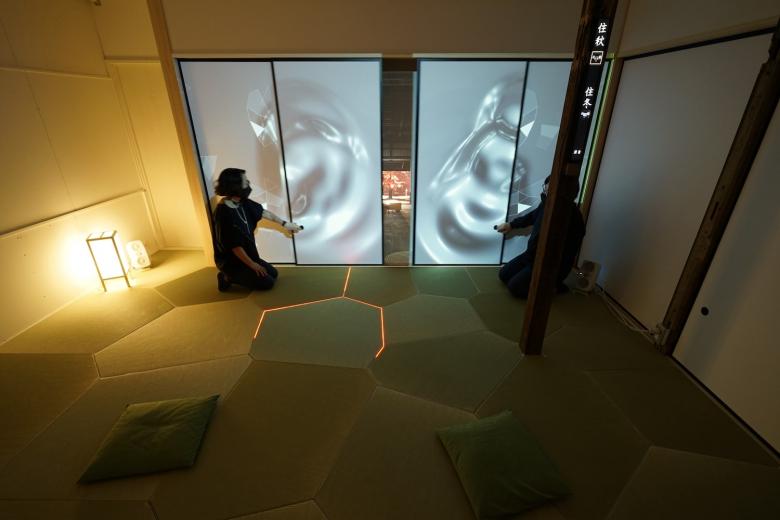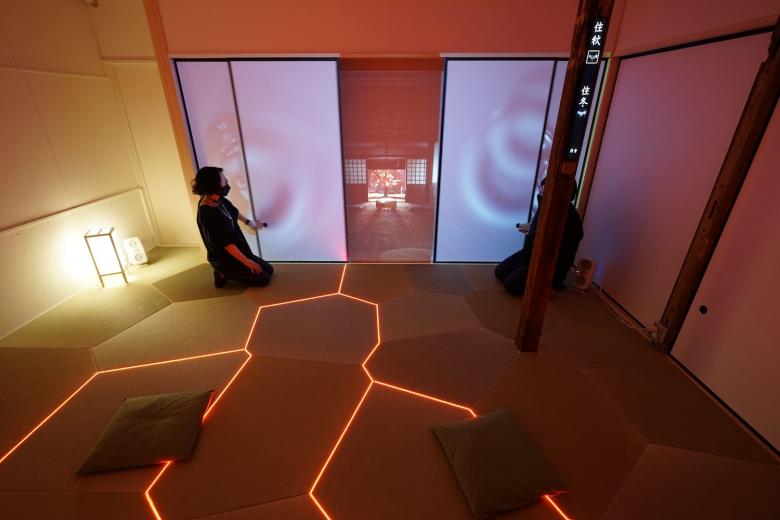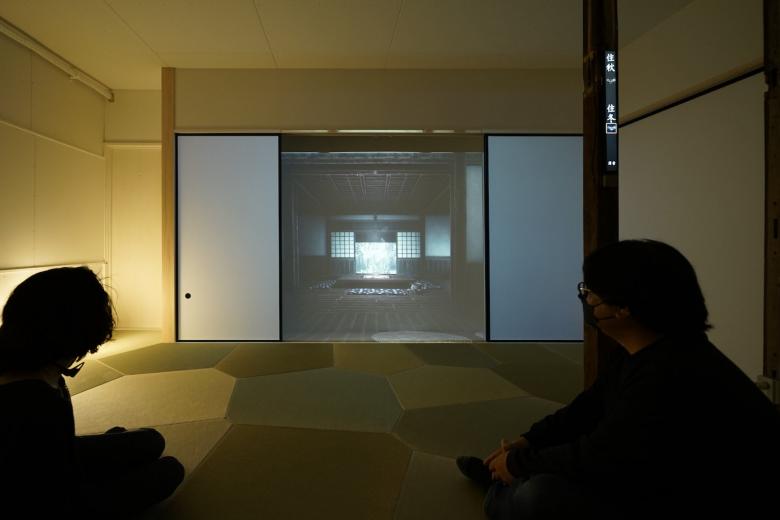今後の住宅・建築業界の新しい価値の創出を探る
XR HOUSE 北品川長屋 1930
Daiwa House, Bandai Namco Research, Noiz Architects
5. 7月 2022
All photos Neoplus Sixten Inc.
大和ハウス工業、バンダイナムコ研究所、noizによる「XR HOUSE 北品川長屋 1930」レポート。「XR 技術」を活用し、リアル世界とバーチャル世界の共生を目指す3社協同の検証実験。
XR HOUSE SHINAGAWA 1930" report by Daiwa House, Bandai Namco Research Inc., Noiz Architects. These prototypes were "proof of concept" phase by three companies that aim to create a symbiosis between a real and virtual world through the XR technology.
場所は「SHINAGAWA 1930」。奇跡的に空襲を免れた築90年の5棟からなる古民家群を京急グループのRバンクが主体で複合施設として再生。2020年にオープンしいくつかの店舗が入居している。
今回そのうち1棟を検証実験施設として改装し、内装設計をnoizが手掛けた。(※一般公開はしていない)
The location is "SHINAGAWA 1930". A group of five 90-years-old old private houses that miraculously survived the Tokyo air raids in 1945 was revitalized as a complex facility mainly by R-Bank, a member of the Keikyu Group. SHINAGAWA 1930 opened in 2020 and operated as several stores. One of these houses was renovated as a proof-of-concept facility, and Noiz Architects designed the interior. (*Not open to the public)
長屋の間の路地にある引戸が入り口。
The entrance is a sliding door in the alley between the houses.
引戸を開けるとトンネルが現れ「XR HOUSE 北品川長屋 1930」に足を踏み入れる。
大和ハウス工業では、コロナ禍によるDXへの対応や空き家問題を課題の一つとして考えており、そこへデジタル技術に知見の深い建築家であるnoizの豊田啓介より「未来の暮らし」にエンターテインメントの視点を取り入れる提案あった。そして、noizと共同研究実績があり「XR※技術」の研究開発を手掛けるバンダイナムコ研究所とワークショップを実施した結果、3社共同でプロジェクトに取り組むこととなった。
建築を専門とする大和ハウス工業とnoizは、リアル空間にどこまでデジタル技術やエンターテインメントを取り入れるか、エンターテインメントに強いバンダイナムコ研究所は、いかにリアル空間にデジタル技術を取り入れるか、3社が専門分野の領域を超えて挑戦したプロジェクトだ。
※XR:AR(拡張現実)、VR(仮想現実)、MR(複合現実)といった現実世界と仮想世界を融合する表現技術の総称
Open the sliding door to reveal a black tunnel and step into "XR HOUSE." Daiwa House Industry has issues about the DX for the Covid19 era and the unoccupied houses. Then Keisuke Toyoda of noiz, an architect with deep knowledge of digital technology, proposed incorporating an entertainment perspective into "future living. After holding a workshop with Bandai Namco Research Inc, which has experience in joint research with noiz and is involved in the research and development of "XR* technology," the three companies decided to work together on the project. Daiwa House Industry and noiz, which specialize in architecture, took on the challenge of how far to incorporate digital technology and entertainment into real spaces, In contrast, Bandai Namco Research Inc, a strength in entertainment, took on the challenge of integrating digital technology into real spaces. The three companies are taking on the challenge of transcending their fields of expertise in this project.
Extended reality (XR) is a term that includes representative forms such as augmented reality (AR), mixed reality (MR), and virtual reality (VR) and the areas interpolated among them.
1階、noiz+大和ハウス工業による「人」の動きに「家」が音と光で反応し、家が人格を持ったような空間。
既に住環境にはアレクサやSiriのような、AI音声認識によって家電などが操作される仕組みがあるが、それら人の行動や操作がデジタル技術によって機器を反応させる様子を光や音で可視化・可聴化した。
On the first floor, Daiwa House and noiz have created a space that has got its own character through the digital technology of several sensors and projection to the tile furniture. Even though there has been a "smart house" in which people can control each household equipment via smart speakers like Alexa and Siri, in the space people can experience a house with its own feeling and communicate with people and other equipment like LED lights by projection and sound.
Gセンサーが組み込まれた電球が吊り下げてあり、それを触ると周囲にある家具の図柄が変化したり、、
When people touch the LED lights hung down from the ceiling, the tile furniture pleaced in this space changes its own pattern.
LiDAR(ライダー)によって人の位置情報も把握できるので、腰掛けた辺りの図柄が複数のプロジェクターによって変化していく。
Also, the space can identify the position of each person by a LiDAR sensor so that when people sit on the furniture it changes its own pattern which is projected by several projectors.
「人→家」という一方通行ではなく、古民家という環境自体がデジタル技術によってあたかも人格を持った存在として現れ、「人←→家」といった「人」と「家」がコミュニケーションを図る、未来の生活が感じられるような設計をした。
This space has been designed to have interaction between people and the house, not only can reply to actions by the people but also can see the people at every moment and react to people's movements in real-time. Therefore people can feel this space as a house with its own feeling and character through digital technology.
2階、バンダイナムコ研究所による、「日常」の空間にデジタルを取り込んだリアル世界とバーチャル世界の共生を目指した空間。
携帯電話やVRゴーグルなどの普及、オンラインによるコミュニケーションツールの進化により、バーチャル空間を体験する人々が増えている。今後もエンターテインメントを中心に様々なコンテンツが充実し、グラフィック・サウンド等の体感技術が向上することが想定される中、リアル世界の住宅環境にもバーチャルに対応した環境が求められると考え、日常とバーチャルの垣根を低くするインターフェースに着目。
従来型の端末はそこへ自ら手を伸ばさないと体験できないうえに、目の前だけの没入型体験になってしまうが、今回のものは人とバーチャルの間に実空間が介在した空間体験型インターフェースのため、日常の中にさりげなく存在したバーチャルが可能となる。
On the second floor, Bandai Namco Research Inc developed two rooms that aim to create a symbiosis between the real and virtual worlds by incorporating the digital into the "daily life" space. More and more people are experiencing virtual worlds with the proliferation of smartphones and VR goggles devices and the evolution of Internet communication tools.In the future, it is expected that content for the virtual world (especially entertainment) will become more substantial and that experiential technologies such as graphics and sound will improve more. In this context, we believe that the residential environment in the real world will also require a virtual-compatible climate, and we focused on an interface that adjusts the boundary between the daily living space and the virtual world. Conventional devices such as VR goggles require the user to be immersed in a virtual world to experience it, immersing only the user. In this exhibition, however, the spatial experience interface, where a real space exists between the virtual and human, allows the user to coexist with a virtual world that naturally exists in everyday life.
〈障子+デジタル〉 障子を開けるとバーチャル世界を「日常」から覗いているかのようなモノクロの屋外空間が広がる。
<Shoji + Digital> When you open the Shoji (Japanese slide door), a black-and-white outdoor virtual environment unfolds as if you are peering into a virtual world from "daily life."
ただCG映像が映し出されているのではなく、雨や雲、風に揺れる木の葉が静かに動き、立体音響の効果により雨音に包まれ、障子の奥に外とつながっているような開放感のある空間を再現している。
障子の奥に映し出された風景は常に全面あるのではなく、現実と同じように障子の開き具合に応じて風景が見え(映し出され)たり、障子を閉じると音も小さくなるなどリアルに再現されている。
柱に見えるタッチパネルでいくつかの風景に切り替え、森の中の神社では「バーチャル参拝」ができる。
The virtual world is not merely a projection of CG images but rather a reproduction of open space behind shoji screens that seem to be connected to the outside world, with rain, clouds, leaves moving quietly in the wind, and the "soundscape" of rain enveloped by the effect of spatial sound technology. The scenery projected behind the shoji screens is not always fully visible. Still, it is reproduced realistically, with the scenery appearing (or being projected) in the back depending on how the Shoji is opened, just as in reality, and the sound also becomes quieter when the Shoji is closed.The touch panel on the pillar allows the viewer to switch between different landscapes, and a shrine in the forest will enable visitors to "virtually visit(pray)" the shrine.
バックヤード。襖の微細な動きに応じてリアルタイムで動画を映し出すには、左上の強力なゲーム用電子基板が不可欠だそうだ。
In the backyard, the developer said that the high-speed arcade gaming electronic board in the upper left corner is indispensable to switch between the front and back images in real-time according to the minute movements of the sliding doors.
〈襖+デジタル〉 〈畳+LED〉閉ざされた空間を創り出す「襖」を開けると、、
<Fusuma (sliding door) + Digital> <Tatami + LED> When you open the fusuma, which creates a closed space...
徐々に見えてくる、、
Gradually, we can see...
バーチャルな隣の部屋。
noizがデザインした「ボロノイ畳」に、LED技術を組み込むことで、コンテンツに沿った自由度の高い演出も可能。
A virtual next room. By incorporating LED technology into the "Voronoi Tatami" designed by Noiz Architects, it is possible to create a highly flexible presentation in the neighboring room.
隣の部屋は囲炉裏のある板の間と、屋外では雪が静かに降っている。囲炉裏からは炭が小さく弾ける音や、将棋を指している音が聞こえ、細かな炭の灰が舞っている。障子の間と同様に、高音質の環境音と相まって落ち着いた時間を過ごすことができる。
これらはCGだけにとどまらず、例えば、隣の部屋には遠く離れたリアルなおじいちゃんおばあちゃんの部屋が映し出される「バーチャル二世帯住宅」も可能だという。相互の映像を通しておじいちゃんと孫が会話をし、将棋を指すことなども夢ではない。
このように、古民家の和室にある「襖」「障子」「畳」に、ゲームや遊びとは異なる日常生活に浸透するようなデジタルな表現を加え、訪れた人々が「リアルとデジタルの融合」を体感し、どのように感じるかを2022年8月末まで検証する。
The next room is a board room with a sunken hearth and snow falling silently outdoors. From the hearth, one can hear the sound of small pieces of charcoal bouncing, the sound of playing shogi (Japanese chess), and fine charcoal ashes dancing. As in the Shoji Room, the high quality of the ambient soundscape combined with the sound of the Shoji Room makes for a calm, relaxing, and timeless experience.These rooms are not limited to computer graphics; for example, a "virtually two-families house" is also possible, in which the room next door shows the real grandparents' room far away. It is not a dream that grandparents and grandchildren can talk to each other and play chess through mutual images.
In this way, the "fusuma" (sliding doors), "shoji" (paper sliding doors), and "tatami" (tatami mats) in the Japanese-style rooms of old houses will be augmented with digital expressions that are different from video games and play and that permeate daily life. We will verify how visitors experience and feel the "fusion of real and digital world" by August 2022.
【XR HOUSE 北品川長屋 1930】
実証実験の内容
建物の価値には法律上の価値(土地の価値)、金融上の価値(担保価値)、不動産取引上の価値(商品価値)、利用上の価値(住まい価値)等が考えられ、経年により下がるイメージがある。今回の検証では、建設してから数十年が経過した建物に、デジタル技術とエンターテインメント技術を取り込むことで、利用者が「住まい価値(利用上の価値)」について体験を通してどのように感じるかを検証する。
実証期間中に「未来の暮らし」や「住まい価値」について、有識者や業界関係者、学生などと意見交換するワークショップを開催し、今後の住宅・建築業界の新しい価値の創出に繋げていく。
Details of the proof of concept;
The value of a building includes its legal value (land value), financial value (collateral value), value in real estate transactions (commodity value), and value in use (home value), all of which are thought to decrease with age. In this PoC, digital technology and entertainment technology will be incorporated into buildings constructed for several decades to verify how users feel about "home value (value in use)" through their experiences.
During the demonstration period, workshops will be held to exchange opinions with experts, industry professionals, students, and others on "future living" and "housing value" to create new value for the housing and construction industry in the future.
詳細:www.daiwahouse.com/about/release/house/20220602114751.html
Posted by Neoplus Sixten Inc.
実証実験の内容
建物の価値には法律上の価値(土地の価値)、金融上の価値(担保価値)、不動産取引上の価値(商品価値)、利用上の価値(住まい価値)等が考えられ、経年により下がるイメージがある。今回の検証では、建設してから数十年が経過した建物に、デジタル技術とエンターテインメント技術を取り込むことで、利用者が「住まい価値(利用上の価値)」について体験を通してどのように感じるかを検証する。
実証期間中に「未来の暮らし」や「住まい価値」について、有識者や業界関係者、学生などと意見交換するワークショップを開催し、今後の住宅・建築業界の新しい価値の創出に繋げていく。
Details of the proof of concept;
The value of a building includes its legal value (land value), financial value (collateral value), value in real estate transactions (commodity value), and value in use (home value), all of which are thought to decrease with age. In this PoC, digital technology and entertainment technology will be incorporated into buildings constructed for several decades to verify how users feel about "home value (value in use)" through their experiences.
During the demonstration period, workshops will be held to exchange opinions with experts, industry professionals, students, and others on "future living" and "housing value" to create new value for the housing and construction industry in the future.
詳細:www.daiwahouse.com/about/release/house/20220602114751.html
Posted by Neoplus Sixten Inc.
